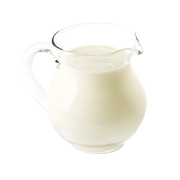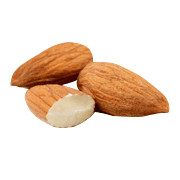GlenkinchieSingle Malt Scotch Whisky
Prior to this time, the distillery's main claims to fame were as one of the five original Lowland distillers to found Scottish Malt Distillers Ltd (later DCL, later UDV aka Diageo); and as one of very few distilleries to continue production throughout the Second World War.
The majority of its output has always gone to blends, principally Haig's, Dimple and Dewar's - even today,despite it's relative ubiquity, only 10% of its 1.6m litres of alcohol per year production is reserved for bottling as single malt.
Glenkinchie has been the Lowland representative of Diageo's 'Classic Malts' since 1988, prior to which time the majority of the spirit went into the Haig's blend. The 10 year-old released for the Classic Malt range caused controversy in the industry, as it was the first time an official bottling of Glenkinchie had been released. Many felt that the distillery's picturesque buildings and farmland setting in close proximity to Edinburgh had caused it to be preferred for the Classic Malts over Rosebank (now universally acknowledged as a genuinely 'classic' malt), which was closed downby Diageo (then UDV) shortly afterwards.
Apart from the 10 year-old expression, which was replaced by a much-improved 12yo in 2007, official bottlings of Glenkinchie have been limited to a regular Distiller's Edition expression finished in Amontillado sherry casks, a one-off cask strength 12yo for Friends of the Classic Maltsand a 20 year-old cask-strength limited edition for Diageo's Special Releases which appeared at the same time as the new 12 year old in 2007. Independent bottlings are rare to non-existent, although a 33 year-old bottling for Dewar Rattray was released in late 2008 to great acclaim. This dearth of expressions means Glenkinchie has seldom held much interest for collectors, althougha rare bottling for JohnDewar called'Jackson's Row' is now a valuable collector's item.
From the website
Although it lies not twenty miles from Edinburgh's great castle and the bustle of the Royal Mile, Glenkinchie's quiet surroundings make this tranquil place seem more remote. This is rolling farm country, perfect for growing barley and described by Robert Burns as "the most glorious corn country I have ever seen".
Because of its closeness to Scotland’s capital city, the distillery is a famed stopping point on the tourist trail – and the proud producer of what is commonly known as ‘The Edinburgh Malt’ – the pale, dry aperitif of choice for polite society.
It has also long been the favourite Lowland malt of the blenders, and so always in great demand.
“One of the best-known Lowlanders. The typical regional character is there in its soft grassiness. Perhaps more like lemon grass? Then spicier, with cinnamon and ginger, in a lively finish.” Michael Jackson, whisky writer and expert.
THE DISTILLERY IN THE PAST
South and East of Edinburgh, where the high, green Lammermuir Hills begin to roll more gently north towards the Firth of Forth, lies the farming country of East Lothian.
Acres of barley grow in this "Garden of Scotland", in fields fed by water softly flowing down from the hills.
The agricultural revolution of the late 18th Century brought this barley to East Lothian in place of coarse crops of little use to distillers; father of the Scottish agricultural revolution John Cockburn pioneered some of the biggest changes locally, at Ormiston. Here, at the heart of the farming community south of Tranent, in the lee of the hills, farmers like the Rate brothers learned from these experiments. They are thought to have begun working on or near this site in 1825, calling their first distillery Milton. The land they farmed had belonged centuries earlier to the de Quincey family, from whose name 'Kinchie' derives. It lay in Lothian, named for King Arthur's brother Lot, who held court nearby on Traprain Law.
The barley they used was often grown on land manured with local seaweed, ripened earlier and was lighter than grain grown elsewhere - qualities soon prized in the Lowland malts made from it. The draff from the distillery long went to feed local cattle in the village of Pencaitland; a prize winning Aberdeen Angus herd grew up on the Glenkinchie Farm.
Glenkinchie was finally rebuilt in the 1890s as the model Victorian distillery village we know today – with its distinctive red brick buildings, houses for workers and even a bowling green. Tradition has its place here; for example, six wooden washbacks are still used for fermentation, two made from Oregon Pine and four from Canadian Larch.
Glenkinchie's two fat old copper pot stills are also a distinctive feature, among the largest in the industry and together producing 340,000 gallons annually. A single cast-iron worm tub cools the spirit, in preference to a more modern condenser, giving a whisky of greater character and depth.
Today, with just two Lowland distilleries left in production, Glenkinchie is the undisputed champion of the light Lowland style. With its interesting visitor center and charming setting, this also makes an ideal first distillery visit for today's tourists. And with more than 40,000 of them visiting each year, Glenkinchie remains at the center of Pencaitland life.
Food suggestion: Glenkinchie is often enjoyed as an accompaniment to sardines and works beautifully with parmesan cheese.
Taste style: Medium. A clean and fresh flavour on the palate with distinctive floral and grassy aspects. Some find notes of ginger in the finish.
Character and Style of Glenkinchie
-
 Grass
Grass
-
 Cream
Cream
-
 Almond
Almond
-
 Apple
Apple
Filter
Price Range
Bottling Status
Age
Vintage
Cask Type
Bottler
Series
Strength
Size
Single Cask
Limited Edition
Flavour Profile
Colouring
Sustainability

Glenkinchie 12 Year Old
$44.59
($63.70 per litre)

Glenkinchie Distillers Edition2022 Release
$69.04
($98.62 per litre)

Glenkinchie 2008 Distillers EditionBot.2020
$70.95
($101.36 per litre)

Glenkinchie 12 Year OldSmall Bottle
$18.02
($9.01 per 10cl)

Glenkinchie 2007 Distillers EditionBot.2019
$74.35
($106.22 per litre)

Glenkinchie 199020 Year Old
$265.73
($379.62 per litre)

Glenkinchie 2009 Distillers EditionBot.2021
$70.95
($101.36 per litre)

Glenkinchie 196419 Year Old Connoisseurs Choice
$1,328.66
($1,771.54 per litre)

Glenkinchie 199217 Year Old Managers' Choice
$424.11
($605.87 per litre)



 Glenkinchie
Glenkinchie
